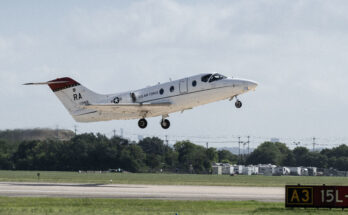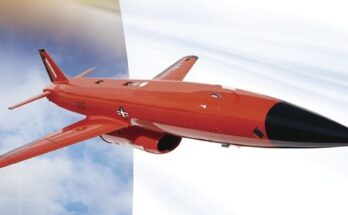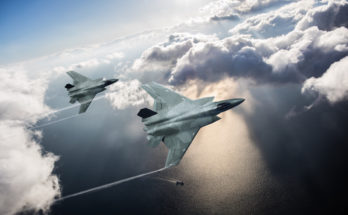by Thomas Dolzall, Defense Analyst, Forecast International.
The adoption by the Belarusian armed forces in early 2017 of the Cayman armored reconnaissance vehicle, which had recently entered serial production, represents a modest but significant step in the maturation of the Belarusian defense industry, and serves as one of several prominent indicators of an emerging trend in Belarusian military procurement patterns toward the acquisition of indigenously developed hardware in response to the country’s subtly shifting strategic demands.
Forecast International Weapons Group anticipates that periodic, small-quantity follow-on orders by the Belarusian Army and a modest stream of export sales will sustain the Cayman’s production line through 2028.
Building a Belarusian Force
The 2014 invasion and annexation of the Crimean Peninsula by the Russian Federation in the aftermath of Ukraine’s Maidan Revolution compelled the Belarusian leadership to reassess its strategic priorities and traditional defense doctrines in order to understand and navigate the emerging threat environment. Cognizant of the danger posed both by an increasingly unpredictable Russian security posture marked by opportunistic territorial and systemic revisionism and by potential sources of domestic instability, the Belarusian Ministry of Defense began to develop and implement a new security doctrine for its armed forces.
The notable formalization of this new defense doctrine in 2016 served to reinforce a number of existing trends in Belarusian strategic thought and hastened the urgency of the armed forces’ pursuit of a modest structural modernization program.
The primary intent of the modernization program is to begin moving the country’s military posture and force structure away from Soviet legacy security concepts predicated on the expectation of large-scale conventional engagements between state military actors. In its place, the Belarusian military intends to begin the formation of a leaner, more rapidly deployable force better capable of responding to hybrid threat environments. The new doctrine’s emphasis on confronting unconventional foes means that the Belarusian Army’s special operations units have been granted a particularly prominent place in new procurement plans.
Through the mid-2010s, the Belarusian economy continued to struggle from the knock-on effects of the 2008 financial crisis and lingering economic downturn in neighboring Russia, owing to the effects of both low gas prices and international sanctions. As such, there was also a strong impetus to foster innovation and develop new defense products for sale on the international export market, which had continued to provide a reliable source of income even in difficult economic circumstances.
As part of this reorientation toward greater strategic autonomy, the Belarusian leadership was keen to reduce the reliance of its armed forces and segments of the defense industry on imported Russian components and hardware where feasible. The Russian and Belarusian defense industries are at once closely linked and interdependent but also fierce competitors, and Russia has traditionally wielded a degree of leverage over Belarus with its conditional willingness to supply it with more advanced defense products.
This shift in approach necessitated not only the increased development and procurement of indigenous Belarusian defense products but also the broader diversification of defense supply streams, evidenced, for example, in the purchase of small numbers of CS/VN3 variant “Dragon” armored vehicles from China in 2017/2018 and increased defense-industrial cooperation with Ukraine and elsewhere.
This initiative does not mark the first instance of Belarusian defense contractors developing indigenous combat vehicle designs, but previous efforts in this domain largely failed to fulfill their potential. In the late 1990s, Minotor-Service Enterprise unveiled the 2T Stalker tracked combat reconnaissance vehicle. The 2T Stalker boasted impressive performance specifications and integrated modern weapons and fire control systems, but its rather specialized battlefield role and hefty per-unit cost made it a difficult sell to Belarus’s traditional export client base. In the end, the 2T Stalker declined to secure any export orders, and the limitations of the Belarusian defense budget coupled with a benign security environment could not justify domestic procurement.
As such, more recent indigenous Belarusian weapons development programs have tended to be designed with the fulfillment of specific strategic requirements of the Belarusian military in mind, or are intended to target less crowded export markets where the established technical expertise or branding of Belarusian contractors is liable to lend them a significant advantage. The development of the advanced Polonez multiple-launch rocket system (MLRS) and unmanned aerial vehicle products, and ongoing production of new heavy-lift truck and logistics vehicle designs, all broadly fit within these tendencies.
The relative simplicity and low costs associated with the manufacture of wheeled vehicle designs, an area in which a number of Belarusian contractors already possessed significant expertise, therefore made the leap to armored vehicles of this class a logical progression. The results of this initiative would include the launch of not only the Cayman, but also of the V1 MZKT-490100 armored personnel carrier produced by Volat Defence (OJSC Minsk Wheeled Tractor Plant).
In the long term, the Belarusian government should be expected to continue expanding its support of defense-industry indigenization into other domains, and, given the fairly robust defense-industrial base that exists already, it is likely to succeed in fostering an array of new and successful mid-range programs over the coming decade.
However, structural and financial constraints would likely stymie attempts to significantly “scale up” both the production and procurement of domestically designed hardware, and there will remain key areas where the Belarusian armed forces will continue to rely on primarily Russian-made platforms. As such, the Belarusian Military’s procurement of indigenous hardware is best understood as shaping the feasible margins of its overall force structure rather than the pursuit of an unrealistic, and in some regards undesirable, state of total defense-industrial autarky.
Call of the Cayman
According to the official magazine of Belarus’s State Military Industrial Committee, the catalyst for the development of the Cayman armored reconnaissance vehicle was a request made by Belarusian President Alexander Lukashenko in 2014 for an indigenously designed special forces vehicle to satisfy the specific requirements of the Belarusian armed forces. The broad program requirements called for amphibious capability and financial affordability, and stipulated that the vehicle’s internal components be sourced as much as possible from domestic industries.
Over the subsequent three-year period, the Cayman moved through the initial design and prototyping process, with the first prototype unveiled in 2016. In early 2017, 140 Repair Plant submitted production-ready models for state testing, and the Belarusian Army began accepting small quantities of the vehicle into active service not long thereafter.
Official publications and visual analysis indicate that the Cayman ARV is an original armored vehicle concept and not the modernization of a Soviet-legacy vehicle. However, its structural design represents an evolution of Soviet-era predecessors of its class rather than a radical overhaul.
The hull configuration displays considerable design continuity with the ubiquitous Soviet-era BRDM-2 patrol car, for example, but also integrates modern influences in the form of its sloped hull armor arrangement and the orientation of its windscreens and doors, bearing outward resemblance to Krauss-Maffei Wegman’s modern Fennek light reconnaissance vehicle.
In October 2018, Defense Minister Andrei Ravkov outlined key procurement targets for the Belarusian armed forces in 2019 to the official media outlet BelTA. In the interview, Ravkov stated that the Defense Ministry had finalized a contract with 140 Repair Plant for the procurement of an additional 22 Cayman ARVs for delivery in 2019. At time of writing, the Belarusian Army possesses an estimated 11 Cayman vehicles.
Belarusian official and independent media have prominently showcased the Cayman as a successful example of domestic defense-industrial development, and the vehicle appears well-suited to provide an affordable solution to the Army’s current operational requirements. As such, small-quantity follow-on orders are likely to lend the vehicle a baseline of support in the coming years.
Nonetheless, a number of factors constrain the overall scale of Cayman procurement by the Belarusian armed forces. Although the vehicle design is adaptable to multiple operational roles, its primary function in the Belarusian context as a special operations platform only necessitates low-quantity acquisition. In addition, as Belarusian defense spending has consistently remained at a modest 1.2 percent of GDP, there are significant financial limitations to the scale of any individual procurement program.
The Ministry of Internal Affairs’ Internal Troops, which appear to operate a handful of the new MZKT-490100 APCs, and other bodies of the Belarusian security apparatus such as the Border Troops or special units of the KGB may also provide sources of small-quantity or one-off orders for the Cayman through 2028.
The international outlook for the Cayman will be tempered by stiff competition from both traditional heavyweights and emerging market leaders, and will be the subject of an upcoming blog.
A lifelong enthusiast of armored vehicles, Thomas serves as an analyst on Forecast International's Military Vehicles Forecast product. In addition, Thomas is responsible for updating the reports and analysis within Forecast International's International Military Markets – Latin America & Caribbean product. He also provides analysis for Forecast International's Airborne Retrofit & Modernization Forecast. Before this assignment, Thomas served as a research assistant for Forecast International's analytical team and has made written contributions to the Civil Aircraft Forecast, Military Aircraft Forecast, and Rotorcraft Forecast services. Thomas derives his knowledge from a multidisciplinary background, with a strong emphasis on the history and politics of Russia and the former satellite republics of the Soviet Union. He has studied in the Russian Federation at Saint Petersburg State University and is proficient in the Russian language at an advanced level.





